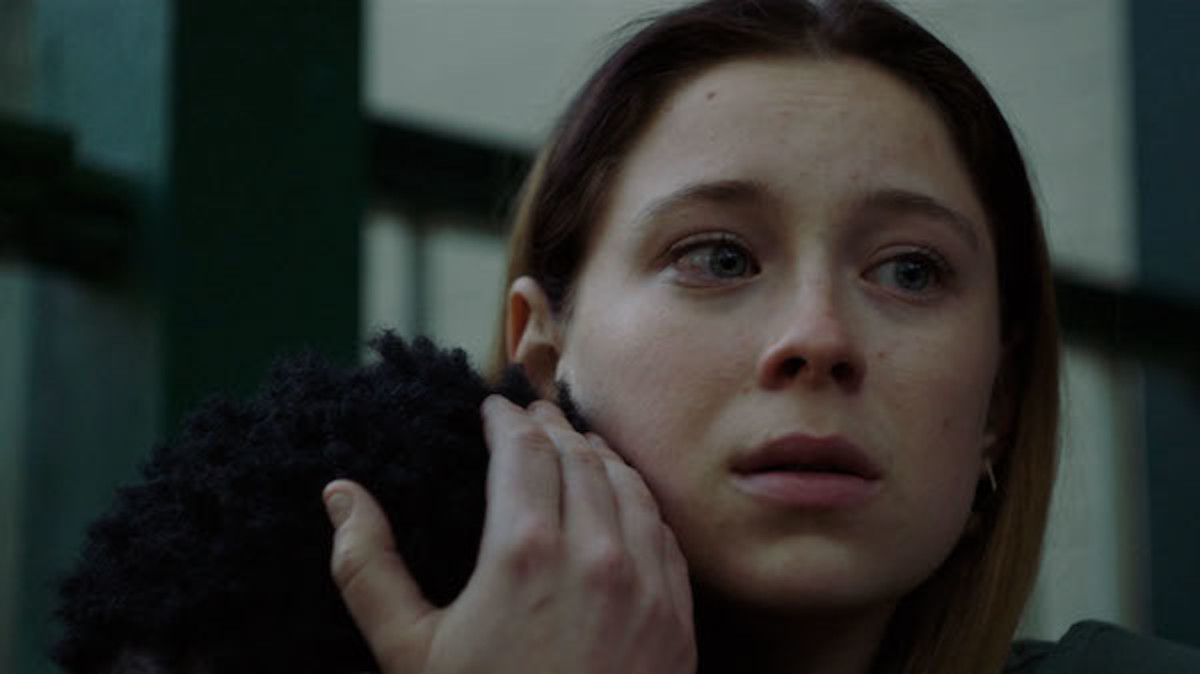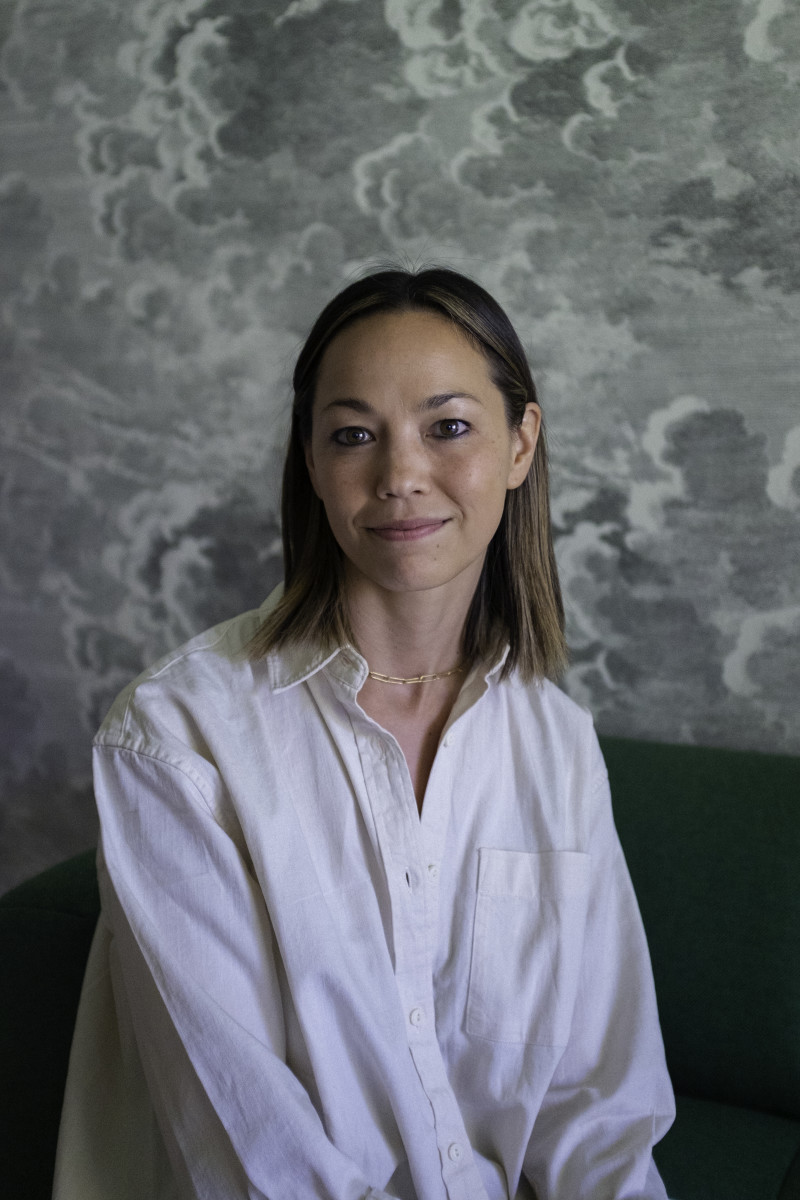Hannah Peterson generously offers insights into the development of her project from the writing and interview process to the remarkable changes that occurred in the editing room.

During the Tribeca Festival I spoke to Hannah Peterson, the writer, director and editor of her debut fiction feature The Graduates. Peterson generously offered insights into the development of her project from the writing and interview process to the remarkable changes that occurred in the editing room. Our in-depth conversation also tackled the tough subject of the aftermath of gun violence, and the decision not to portray violence on screen.
“While I was writing, I experienced a sudden personal loss when my younger brother died of gun suicide. The grief that I experienced through that loss, and the coming together of my family and community around it, became imbued into the fabric of the story and informed several of the choices I made in the edit.” – Hannah Peterson
Named one of the “25 New Faces of Independent Film” by Filmmaker Magazine, Hannah Peterson’s work has screened at Sundance Film Festival, MoMA, REDCAT, Tribeca Film Festival, and Slamdance Film Festival where she was awarded the AGBO fellowship for her short film, East of the River. She holds an MFA in Film Directing from California Institute of the Arts (CalArts) and a BA in Screen Studies from the New School. Prior to her work as a director, Hannah mentored under filmmakers Sean Baker and Chloé Zhao.
About The Graduates: A year after her boyfriend dies from gun violence, a young woman prepares to graduate high school as she navigates an uncertain future alongside a community that is searching for ways to heal.
KOUGUELL: From the inception of the script to the final cut, you were in a unique position as the writer, director, and editor, to convey the story you wanted to tell. This is an auteur film in the best sense of the definition. Tell me about the process.
PETERSON: When I set out to make The Graduates, I was interested in telling a contemporary story, a coming-of-age story in the American public school system. I set about interviewing high schoolers and recent graduates, and asked about their experiences, their fears, and the highs and lows of high school.
This is something I explored in my short films prior and wanted to explore in a feature. Nearly everyone I spoke to mentioned their anxiety about safety in their school and that on any given day something could happen. I was very struck by that. I couldn’t tell a contemporary story without touching upon that throughline. I wanted to explore what it was like when the cameras left and the resources left, and how it was really a community left to navigate the circumstances.

In terms of the script, I was writing it as a vehicle for me to direct. I always see the script as a more malleable instrument. There were scenes that I knew I wanted to cast real people in or cast locally. For instance, the grief circle and the basketball team. I knew in advance before we went into production I wanted those to be real people, actual high schoolers, sharing their actual stories, their actual hopes and dreams. I was leaving space for those moments to be happening organically, and the rest to be scripted.
In the process of production things obviously changed as they do. As you mentioned, to be the editor, I had a new and added perspective. I certainly did a lot of rewriting in the edit of the film. The script was originally structured in chapters, Chapter 1 was Genevieve, Chapter 2 was Ben, and Chapter 3 was Jon. It worked so well on paper and I had great responses to the script and we shot it that way, but it wasn’t until the editing room – it might be a testament to the performances all being so powerful – but I knew we had to be with all these characters from the start to finish of the film. Of course, this required some pulling from Act 3 to Act 1, and reordering a lot of things and that was really an activity of discovery. I really found the film when I made that decision to do that.
KOUGUELL: You just mentioned about the interviews you had with actual high schoolers. Please elaborate about that process.
PETERSON: I was lucky to learn about writing and directing from Chloé Zhao and Sean Baker. Both of them spend a lot of time on locations where they will be filming and speaking with individuals who are living the experience of the characters. That creates a fluidity between the screenwriting process and the casting and location processes; that was something that was influential in all my work.
On this feature, I set up as a writer to be a listener. The students who I interviewed were just any students who were willing to speak to me. I actually saw a photojournalism article in the New York Times called “Inside Santa Monica High”. There were these candid photos taken by Nico Young, who was a junior at the time. I was so moved by the photographs. I reached out to Nico and asked him to meet the subjects of his photographs. In my interviews, I asked students what high school is like. The students shared their journal entries and told me private moments in their lives, and through those conversations, I got to hear about their anxieties and about safety in their schools. That became the most substantive part of these conversations.
KOUGUELL: There is no antagonist, except for the gunman who remains unnamed and unseen on screen. This was a powerful choice not to give attention to him, which is often the case in the media.
PETERSON: I think the first and easiest choice I made was not to show the act of violence itself. This created a lot of creative challenges because you’re basically skipping over the inciting incident of all these people’s lives. When you’re talking about trauma and grief, they’re not actually linear experiences and when you’re in that situation, the world is antagonistic. You don’t necessarily need massive conflict in every scene because your life is conflicted. I really decided to trust in that and in the characters and situate the plot around these private moments of grieving rather than on traditional plot points or inciting incidents.
KOUGUELL: You mentioned this feeling of agency that your main characters had, and how they are on that journey to find that. There were also moments of levity that were important and not only drove the narrative forward, it made the drama that much more impactful and moving.
PETERSON: It’s always really important when talking about things as heavy as death, grief, and trauma, to lever that with moments of levity. When you’re spending time with young people it’s inevitable because people don’t always talk about what they’re feeling all the time. A lot of it is underneath; a lot of it is mundane, just natural levity in the way young people express themselves, especially in the privacy of each other’s company that I wanted to make sure was part of the fabric of this film.
KOUGUELL: You allowed the characters to breathe in the film and spend time with them, not cutting away from them too quickly. This is such a difficult subject matter and I imagine with the whole process of treading that fine line, questioning: is it too much, is it too little? How did you find that balance?
PETERSON: I cared so much about the characters and cared about the actors. Each character was emblematic of a multitude of conversations I had along the way about survivors with high schoolers and with youth. It was so important for me to be able to do those people justice and to honor them.
When I was editing it, thinking about the frame and the camera, I wanted it to feel like I was there with the characters and I didn’t want to leave them until they were ready to be alone. It drives the rhythm of the script. In the moment that a character could be strong for a minute, we can go to someone else, and when that person needs someone to be there we can go there as audience members.
KOUGUELL: The film concludes on a hopeful note without feeling contrived or tied up in a neat bow.
PETERSON: I’m really glad you got that. I wanted people to take from the film the conversations I had with survivors during the writing process. Throughout the conversations I was moved by the sense of agency and urgency and altruism and that while this generation was rooted in grief, I found it really hopeful. In the film there are no grand gestures; there is a subtle rebuilding of a sense of self that really comes when each character starts to turn towards each other. For me, there is so much hope in that.
I hope that this film provides a safe space for people to process feelings about gun violence in our country that can exist outside of the reactive cycle of the news media and to connect with one another, because I believe that connection and conversation can be the precursors for action.